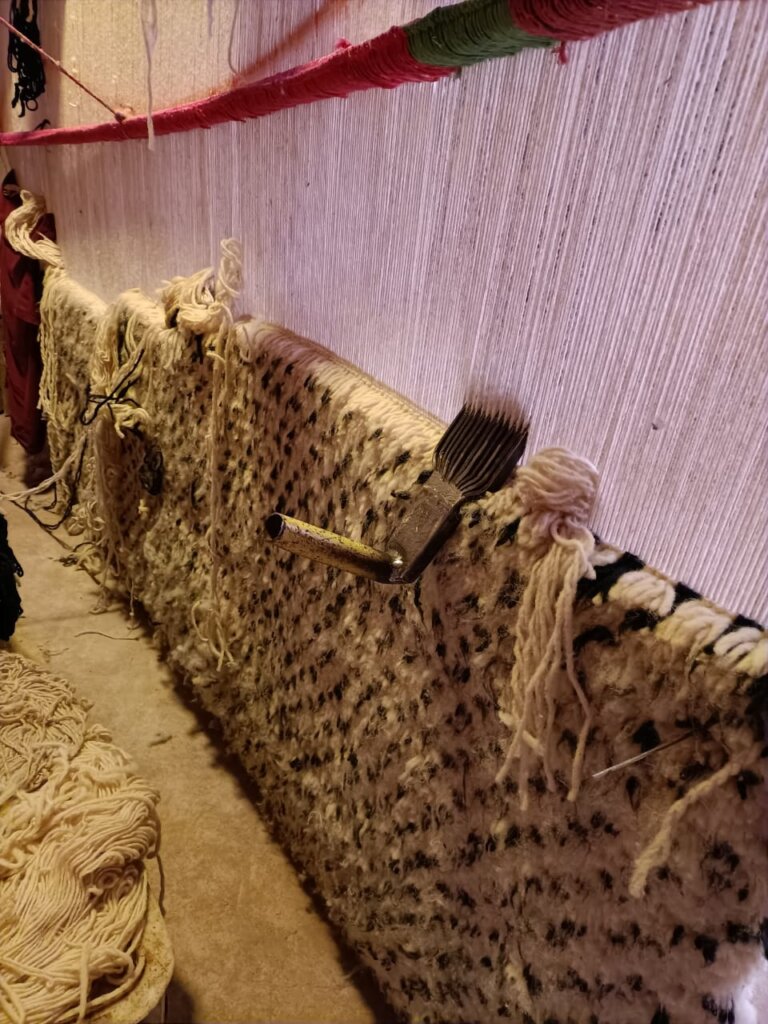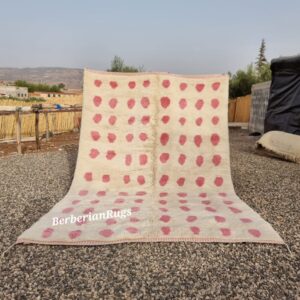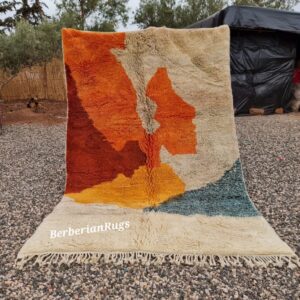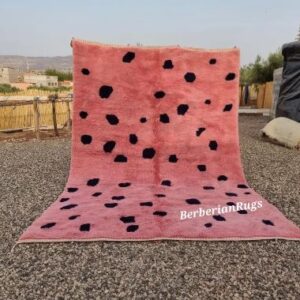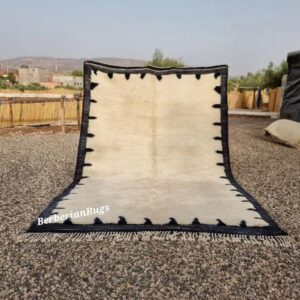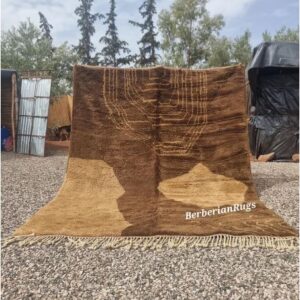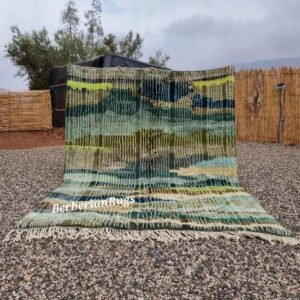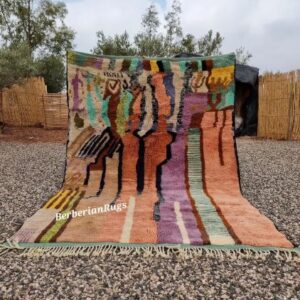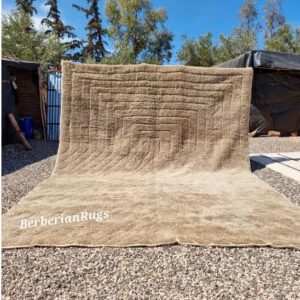Moroccan Rugs Blog
The Journey of a Beni Ourain Rug : From Sheep to Shop
In the Middle Atlas, many Berber tribes still live in villages barely accessible up dirt tracks edging off the sides of cliffs. These communities hold the secrets to weaving Beni Ourain rugs, an ancient process that has found a host of new admirers from around the world.
Traditionally, these rugs began their lives high up in the mountains before finding their way to a shop in Marrakech, Fez or some other Moroccan city. But due to their rising popularity, a new business venture has stepped into the fray, creating an alternative way for people to acquire these coveted carpets direct from the source.
And in doing so, they’ve cut out a crucial stage in the typical journey of a Beni Ourain rug. But does this change cut out an essential element of it?
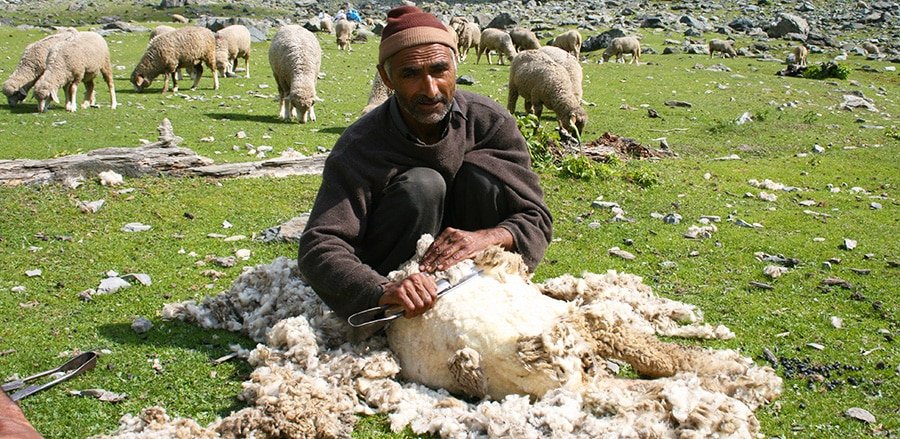
Villages of artisans
The very first point of call is out on the mountainside, with the sheep. Duties are generally split up by gender, but shared between the whole village. Most of the shepherding is done by the men, who also shear the sheep when the time comes.

That wool is then separated, depending on factors like age and where on the sheep’s body it comes from. The very best wool sits along the sheep’s neck and spine – even better if that animal hails from the High Atlas. The softer, purer fleece is then usually mixed together with the hardier, coarser wool that comes from the Middle Atlas herds.
To get enough wool for a standard sized rug, it’ll take 50 to 100 sheep giving up their well-grown winter coats. Once it’s separated, the women take it for its first cleaning, often using Morocco’s famous Beldi soap, down in the local streams that flow from the mountaintops.
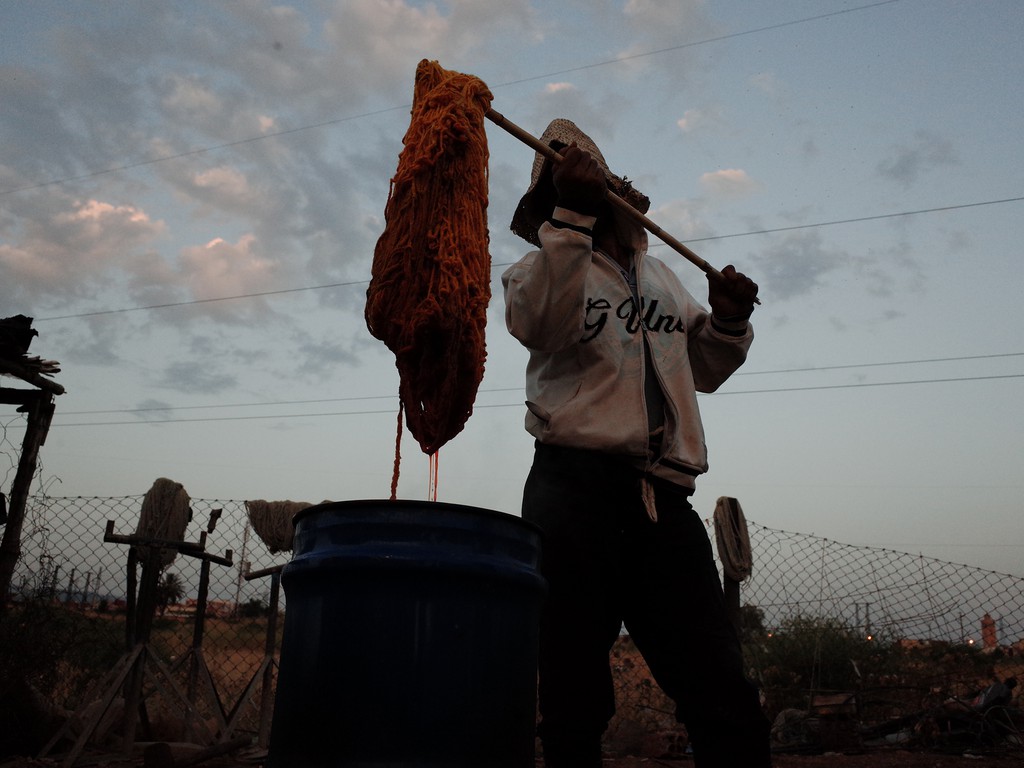
The spooling is another job for the women, who hand-spin the wool into different thicknesses of yarn that are then twisted around a wooden dowel. Much of it is left the colour of natural cream, but if different shades are needed for the design, weavers use local flora and spices to dye the yarn.
Once they know the rug’s basic design, the women can start to set up the loom with the necessary dimensions and begin to loop on each string of yarn. If the design is being kept traditional, they’ll leave a space for tassels and additional adornments on one side.
The charm of the hand
Inevitably, mistakes are made during the making of Beni Ourain rugs. But these inimitable imperfections are precisely what gives them value – something that is missing from their factory-made counterparts. Locals refer to these unique whorls of errors as ‘the charm of the hand’.
They’re also found in zellige, the geometric tiles that adorn the interiors of Moroccan structures, from mosques to riads. They look like complete, perfect designs from afar. But as you get closer you start to see the slight mismatches and minute mistakes.

No two zellige or Beni Ourain rugs will ever look the same, even if they’re ostensibly of the same design. And that’s exactly why collectors, designers and those who like to buy fine things are flocking to Marrakech to find one to call their own.
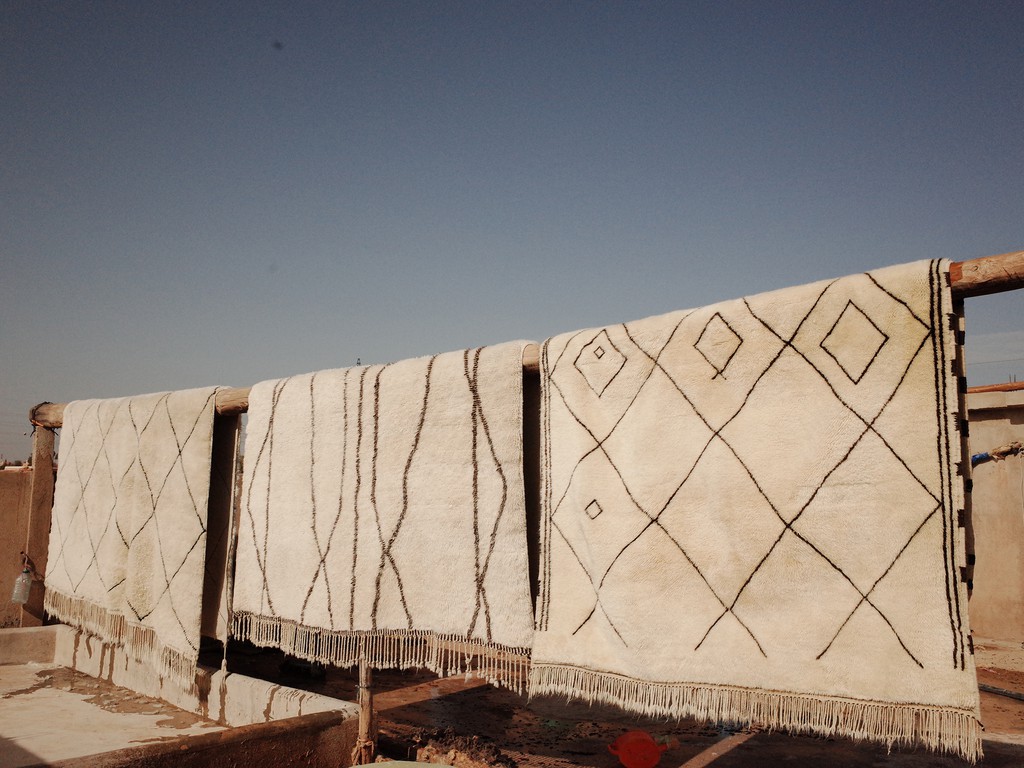
Written by James Tennent
Hope this helped you out for a bit. For any additional questions, feel free to contact us.
Join our mailing list
Subscribe to our newsletter and stay up to date. Receive 5% off your first purchas.

